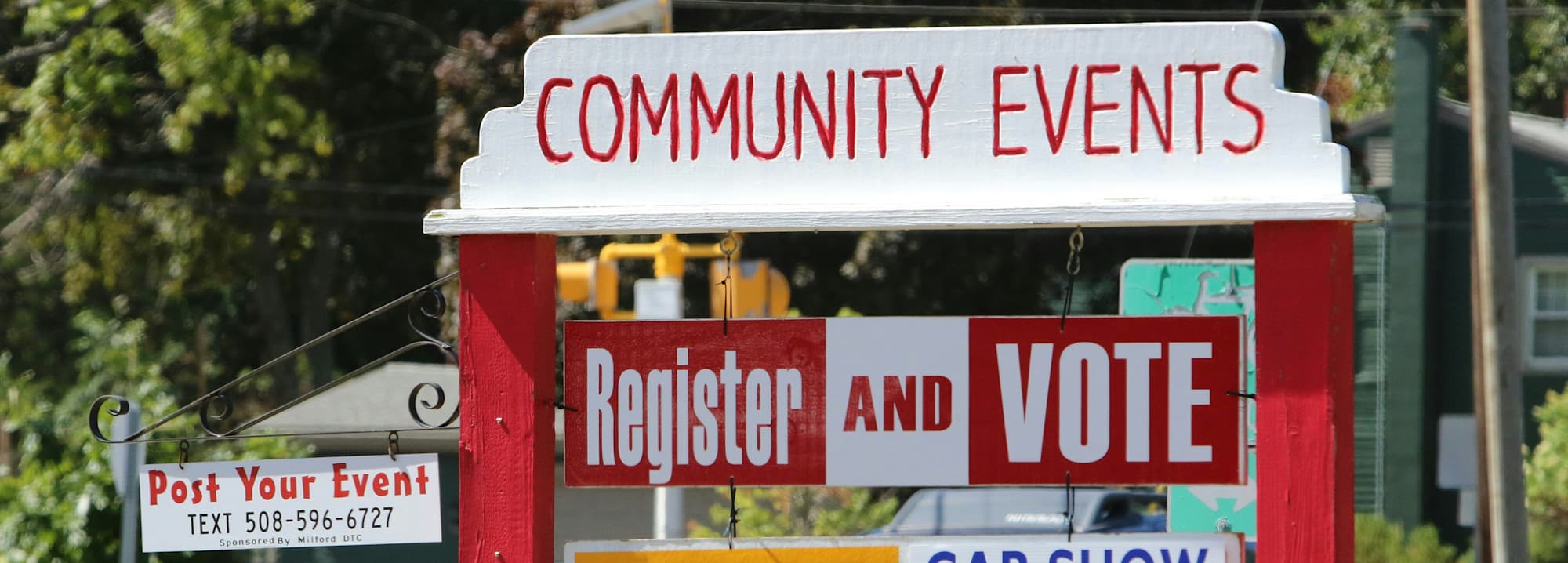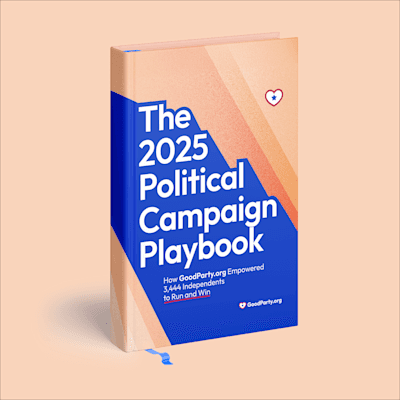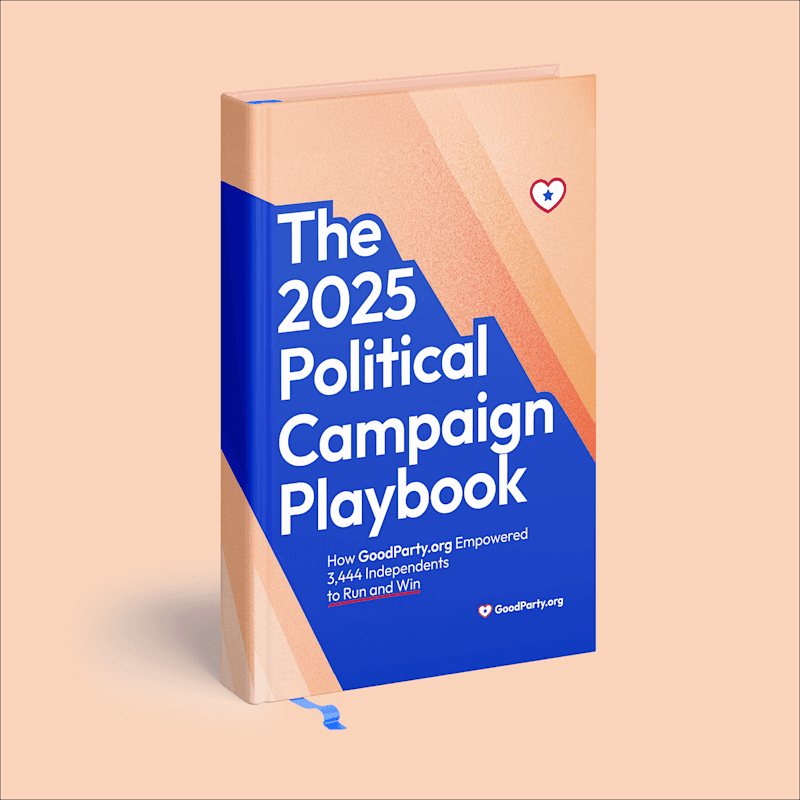
Voter Mobilization Made Easy: 10 Tactics to Boost Turnout
A strong voter mobilization strategy is crucial for modern political campaigns. In a country where voter turnout regularly falls below 60%, especially in local elections, effective voter mobilization can determine the outcome of an election and the future of your community.
In this guide, we’ll break down what voter mobilization means, why it matters, who makes it happen, and which grassroots strategies are the most effective for increasing turnout in your community. Whether you’re running for office, leading a local organization, or just looking to get involved in local politics, these proven tactics will help you engage and energize the electorate.
What Is Voter Mobilization?
Voter mobilization is the process of identifying, engaging, and motivating eligible voters to participate in elections. While part of it is about encouraging people to vote, it’s also about building relationships, breaking down barriers, and helping people see that their voice matters.
Ultimately, voter mobilization is about turning potential into power. Whether you’re helping someone register to vote, giving them a ride to the polls, or reminding them that local elections impact their everyday lives, every touchpoint matters.
Why Voter Mobilization Matters
Mobilizing voters is one of the most powerful tools for strengthening democracy. Unfortunately, voter turnout in the United States remains lower than in many other developed nations, especially in local elections:
Only 64% of eligible voters turned out for the 2024 presidential election, the second-highest turnout percentage in the last century.
Local elections often see turnout rates of 15% to 27%, with some municipal contests dipping below 10%.
Young voters (ages 18–29) had just 47% turnout in the 2024 election, despite being one of the most diverse and progressive voting blocs.
When people don’t vote, decisions get made without them. That leads to governments that are less representative of the full community, less responsive to local needs, and less accountable to the public.
Voter mobilization helps close those gaps. It ensures that everyday people, not just the wealthy or well-connected, shape policy, and that underrepresented communities get a seat at the table.
Mobilization efforts are especially impactful in down-ballot races, where just a few dozen votes can change the outcome. In these cases, a strong voter engagement plan isn’t just nice to have. It’s essential.
LEARN MORE: Understand the importance of turnout in local elections.
Who Participates in Voter Mobilization?
Everyone in the community has a role to play in mobilizing voters, including:
Candidates and their campaign teams
Volunteers and grassroots organizers
Nonprofit and civic organizations
Community leaders and influencers
Friends and family members
Some of the most effective mobilization efforts come from people inside the community — neighbors talking to neighbors, students helping peers register, or faith leaders encouraging civic participation from the pulpit. Voter mobilization is most effective when it’s personal, relational, and rooted in trust.
10 Most Effective Voter Mobilization Tactics
There’s no one-size-fits-all approach to voter mobilization. However, the most effective strategies share a few key ingredients: direct outreach, personalized messaging, and removing barriers to participation. Below are voter engagement strategies that work, especially for Independent and local campaigns.
1. Go Door-to-Door
Face-to-face conversations can make or break a campaign, but they can also help improve voter turnout. Canvassing lets you build real connections in your community, gives you a chance to answer questions in real time, and helps voters feel seen and heard.
Knock on doors, introduce yourself and your campaign, and ask voters if they’re registered and have a plan to vote. Provide voter registration forms, sample ballots, or links to official information. Even a short conversation can make someone more likely to cast their ballot.
LEARN MORE: Use our guide to door-to-door canvassing to maximize your impact.
2. Use Relational Organizing
Relational organizing leverages existing personal networks to increase turnout. Instead of cold calls or outreach from strangers, supporters talk to people they already know, like friends, family, coworkers, and classmates.
Ask volunteers to contact 3-5 people in their networks and help them register, make a voting plan, or get to the polls. Research shows this method consistently boosts turnout.
3. Text, Call, and Message
Digital tools offer scalable, effective ways to reach voters, especially younger and low-propensity voters.
You can leverage tools like:
Messaging apps, like WhatsApp or Signal
Social media
Keep messages short and friendly. Include links to voter registration pages, sample ballots, or polling place lookups. Remind supporters of upcoming deadlines, and always include a clear call to action.
LEARN MORE: Get 5,000 free texts for your Independent campaign with GoodParty.org’s GOTV support tools.
4. Attend and Host Local Events
Being present in your community builds visibility and trust.
You can:
Attend school board meetings or clean-ups
Host voter registration drives and meet-and-greets
Speak at town halls
Hold a table at a farmers market or festival
These events create low-pressure spaces to talk about the election, distribute materials, and help people register or make a voting plan on the spot.
LEARN MORE: Learn how to plan impactful campaign events.
5. Engage on Social Media
Social media lets you spread your message farther and faster than ever before. But it’s also a powerful tool for driving voter action. Post reminders about registration deadlines, early voting dates, and polling locations. Use stories, graphics, and videos to increase visibility and share behind-the-scenes moments.
Encourage your followers to share your content, tag friends, and get involved. Consider hosting a Q&A livestream or creating a short reel on how to vote in your area.
LEARN MORE: See how to make social media work for your campaign.
6. Make Voting Fun and Accessible
Voter mobilization doesn’t have to feel like homework. Gamify the process by creating challenges or contests around voter registration or turnout. Offer incentives, like campaign merch, for people who bring a friend to register or show proof they voted.
Ensure information is accessible, too. Use plain language, infographics, and multilingual materials whenever possible. Meeting people where they are increases the chances they’ll follow through.
7. Offer Help — and Ask for It
Many people want to vote, but they may face obstacles. Perhaps they’re unsure of ID laws, need a ride to the polls, or don’t know how to vote by mail. Your job is to help clear those hurdles.
Offer resources, transportation, and assistance wherever you can. Create a network of volunteers to help neighbors figure it out, and don’t be afraid to ask your community for help in return. Mobilization is a team effort.
LEARN MORE: Find ideas for overcoming common voter barriers in our guide to increasing turnout.
8. Build a Volunteer Program
You don’t have to mobilize your entire community alone. Recruit and train volunteers to help with canvassing, texting, event planning, and voter support. Volunteers not only expand your reach, they deepen community ownership in your campaign.
Remember to thank your volunteers often and publicly. Celebrate milestones, highlight volunteer stories, and show your appreciation. The stronger your volunteer network, the stronger your mobilization efforts.
9. Send Direct Mail with Purpose
Mailers can still be effective, especially for older voters or those less active online. Use direct mail to share key dates, provide sample ballots, or tell a personal story about why voting matters.
Keep it simple, visual, and localized. Include contact info and a QR code that leads to your campaign site or a voter registration portal.
10. End Strong with a GOTV Push
As election day approaches, your focus should shift from persuasion to action. This is the get-out-the-vote (GOTV) phase, where you get everyone who already supports you to go to the polls.
Ramp up your reminders, offer rides, post polling locations, and follow up with anyone who hasn’t voted yet. GOTV is the time to go all in.
LEARN MORE: Master the GOTV phase of your campaign with our expert tips.
Take the Next Step
Mobilizing voters is a commitment to building a better, more inclusive democracy. Whether you’re a first-time candidate, a seasoned volunteer, or a concerned neighbor, you have the power to make a real difference.
At GoodParty.org, we offer free tools, training, and support to help you activate your community and win your campaign. From voter registration to election day, we’ve got your back.
Photo by David Trinks on Unsplash
Ready to mobilize your voters and win your race? Sign up today and start organizing for change.

